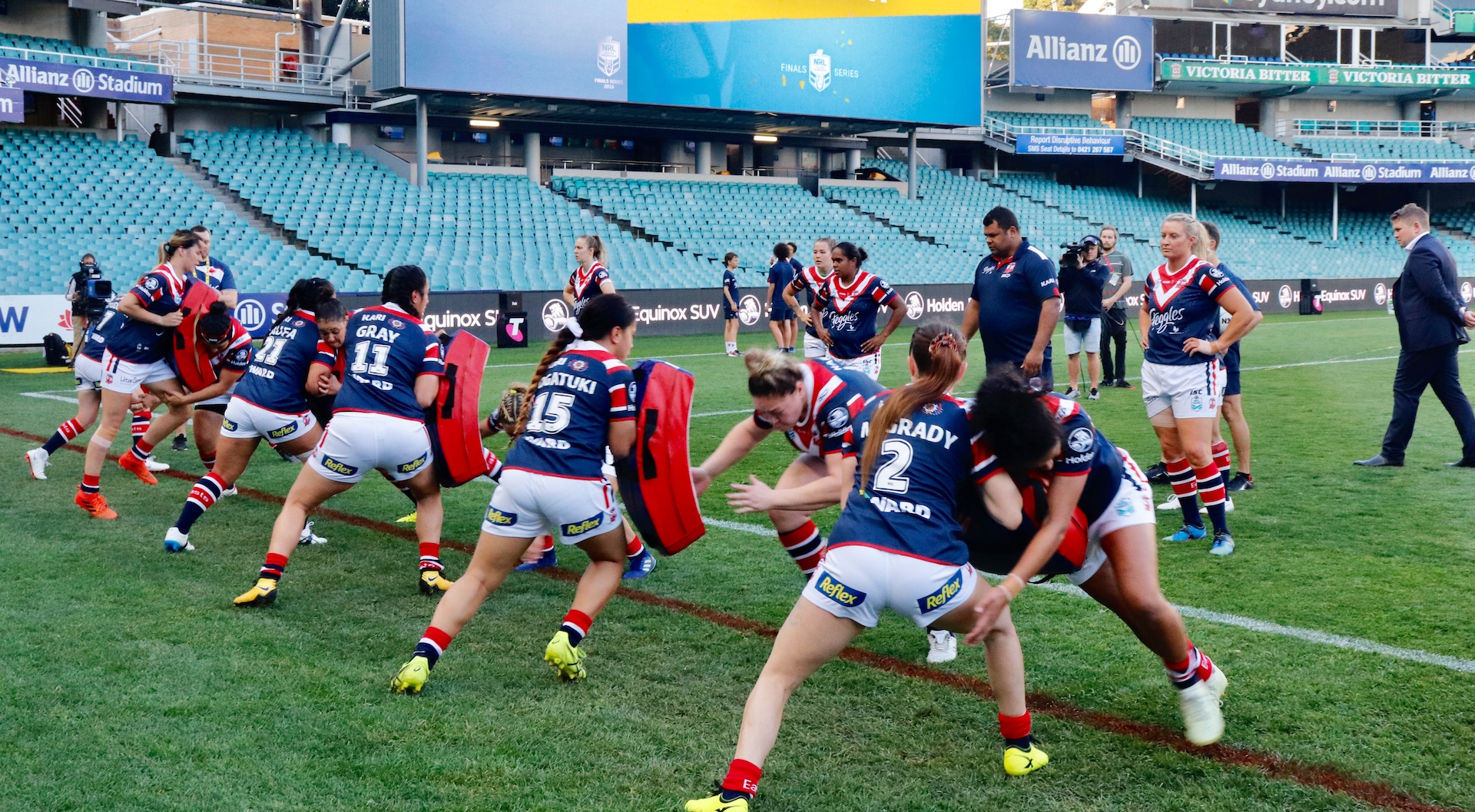New professional competitions for both women’s rugby league and AFL. A $30 million injection of government funds into female sport in Victoria. And no longer do the Matildas, the national women’s soccer team, have to take their clothes off to get media attention.
Women’s sport has come a long way in Australia – or has it?
Certainly, there has been progress. Female Rugby Sevens players make almost as much as their male counterparts. Women cricketers are earning better than ever. And female rugby players, both league and union, are now well looked after – they used to have to pay for their own food, accommodation and uniforms.
Around 70% of sports facilities had no appropriate change rooms for women and girls says @Bridie_OD but there is $15m for female-friendly facilities to increase diversity in sports participation and #changeourgame #MAVconf18 pic.twitter.com/fEAaQjHPwu
— MAV (@VicCouncils) October 18, 2018
Bridie O’Donnell, who heads Victoria’s Office for Women in Sport and Recreation, says that, despite recent developments, women’s sport still lags “10 to 50 years behind [men’s sport]”, thanks to “200 years of patriarchy”.
A three-times Australian cycling champion, Dr O’Donnell recalls how women were seen as second-rate within her own sport. In the AFL, meanwhile, female athletes are still struggling for recognition.
That view was reinforced when former AFL coach and player Mick Malthouse described AFL at a football lunch in September as a “man’s game”, prompting AFLW player Moana Hope to walk out in disgust.

One sport where attitudes have changed is soccer. Prominent sports journalist and commentator Kevin Airs recalls how the Matildas took their clothes off for a nude calendar in 1999.
“Thank heavens they don’t have to do that these days to fund their craft,” he said.
Since then, the sport has been transformed in terms of visibility and professionalism, along with attitudes towards it, as the Matildas have risen to be among the top six teams in the world.
Airs says female sporting role models have become more visible in the football codes and he attributes this to “the democratisation of social media, where people can actually watch YouTube streams of minority sports [as well as] … females playing sport”.
“Also, success brings higher profile, which will then inspire others to try the sport,” he says.
Dr O’Donnell says that in the past there was a lack of interest in women’s sport, because it was seen as an inferior product and therefore failed to attract sponsors and television rights.
“Women’s sport hasn’t been valued, it hasn’t been shown and it’s constantly been measured against men’s sport, as though it was the poorer, slower, less exciting, less strong, less fast version of men’s sport, which we all know is not the case.”
Women tennis players now earn equal pay at the major tournaments, although it took decades for the Australian Open (2001), French Open (2006) and Wimbledon (2007) to follow the US Open’s example, set in 1973. (There is still pay disparity at the smaller tournaments.)
The US Open gave way after women’s champion Billie Jean King threatened to organise a boycott of the tournament. King, a former world No 1 player, was an early trailblazer on the road to equality for women’s sport. Her historic victory over former men’s Wimbledon and US Open champion Bobby Riggs in the so-called Battle of the Sexes in 1973 was memorably reprised by Emma Stone in the movie of the same name.
Next month, I will turn 75 years young. To celebrate, I’m thrilled to share the news of a new exhibit @NYHistory, “Billie Jean King: The Road to 75,” featuring 75+ photos from my tennis career & my work fighting for social justice. https://t.co/FaL6X6EYfW
©AELTC/Michael Cole pic.twitter.com/WJgPevPF5x— Billie Jean King (@BillieJeanKing) 19 October 2018
Angela Bacic, a journalist with sports news site The Women’s Game welcomes the professional women’s NRL competition. Although a Brisbane Broncos fan from a young age, she was steered towards dance by her mother when growing up, as rugby league was seen as a man’s game.
After a year of dance, she moved on to netball and swimming, regarded as girls’ sports. But they only partly filled the void, as the young Bacic wanted to play football and in rugby league there were no visible role models.
So she is more than happy to see young girls now able to dream, thanks to the NRLW, of becoming professional rugby league athletes.

For Bacic, there were no pathways for girls aspiring to play senior women’s rugby league. For the NRL to have a women’s competition is “pretty amazing, not just for my generation, but … [for] the young girls coming through to have someone to look up to”, she says.
“You see the girls at the game and they’re so excited – ‘I’m going to be the next Ali Brigginshaw!’
“That’s amazing to see, and kind of reminded what I saw when I started watching W League [the inaugural women’s football competition, founded in 2008] … and [I was like] ‘Oh my God, there’s a pathway for me to play professional football if I wanted to one day!'” – Words and video by @carolinelayt


